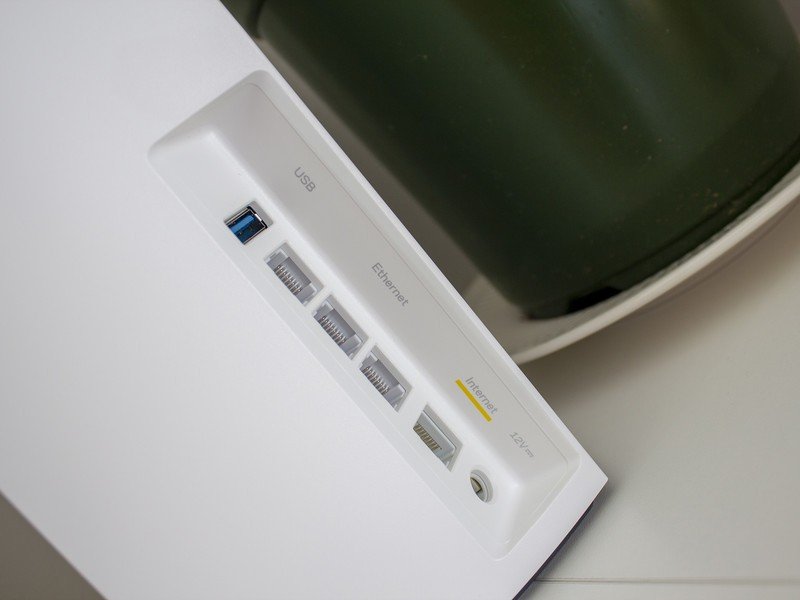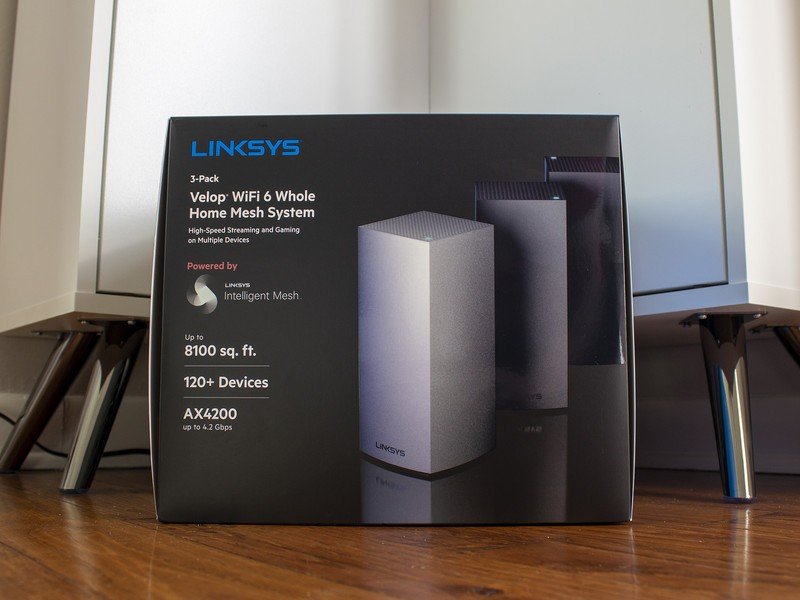Linksys Velop MX10 vs. Linksys Velop AX4200: Which should you buy?

Linksys Velop AX4200

While its 4.2Gbps wireless speeds are a little slower than the Velop MX10, there are very few people who might notice the difference. A lower price and a third included node means you're getting a great deal on blazing-fast Wi-Fi 6 speeds everywhere in your home or yard without ever dropping a connection.
Linksys Velop AX4200
A better fit
Linksys Velop MX10

When only the fastest Wi-Fi 6 mesh speeds will do, the Linksys Velop MX10 is the system for you. It features four gigabit LAN ports on each node, as well as wireless speeds up to 5.3 Gbps, so you'll never worry about slow Wi-Fi again.
Linksys Velop MX10
Upgrade pick
Linksys' Velop MX10 and AX4200 are some of the best Wi-Fi 6 mesh systems you're going to find. Linksys' naming conventions are a bit weird these days but, despite all the different names, the Velop MX10 system is Linksys' top-of-the-line mesh system. When compared to the more affordable Linksys Velop AX4200, you'll find that the Velop MX10 is generally more than most people will want or need in a whole-home Wi-Fi 6 system. Those two factors make the Velop AX4200 a better choice for most people.
Linksys Velop MX10 vs. Velop AX4200 How much speed do you need?
In our Linksys Velop AX4200 review, we noted that the Velop AX4200 came much closer to the maximum speeds offered by the ISP, while other systems tested produced a much slower result. When comparing the Velop AX4200 to the Velop MX10, aside from price, there's one clear difference between these two mesh router systems: wireless speed.
A single node is known as the MX5 or the AX5300, the latter of which helps better place it within the Velop line in terms of raw performance. Therefore, the Linksys Velop MX10 (also known as the AX5300) sports faster theoretical Wi-Fi 6 speeds than the Linksys Velop AX4200. Here's what those numbers mean:
AX refers to 802.11ax, the wireless standard that's also known as Wi-Fi 6. For reference, 802.11ac is also known as Wi-Fi 5. 4200 or 5300 is the maximum theoretical wireless speed, measured in Mbps (Megabits per second). This speed is calculated by adding up the maximum transmission speed of all 2.4GHz and 5GHz channels that the router supports simultaneously.
| Header Cell - Column 0 | Linksys Velop AX4200 | Linksys Velop MX10 |
|---|---|---|
| Node dimensions | 4.5" x 4.5" x 9.6" | 4.5" x 4.5" x 9.6" |
| Antenna configuration per node | Tri-band AX4200 with 4x4 MU-MIMO | Tri-band AX5300 with 4x4 MU-MIMO and 1024-QAM |
| Wi-Fi Speed | AX4200 (4.2Gbps) | AX5300 (5.3Gbps) |
| Rated coverage for full system | 8,100 square feet | 6,000 square feet |
| Wireless security | WPA3 | WPA3 |
| Wi-Fi 6 support | Yes | Yes |
| LAN ports | 3 per node | 4 per node |
| Wired Backhaul Support | Yes | Yes |
| USB Ports | 1 per node | 1 per node |
| QoS | Prioritize many devices | Prioritize many devices |
| Parental controls | Yes | Yes |
| Virtual assistant support | Alexa, Google Assistant | Alexa, Google Assistant |
| Price | $499 (3-pack) | $699 (2-pack) |
As the names suggest, the Velop AX5300 can be faster than the Velop AX4200. While theoretical speeds are great and help create a clear distinction between both routers, there's a reason we call these theoretical speeds. In order to take advantage of the fastest speeds, you'll also need devices that support them. Even if your device supports Wi-Fi 6, it may not support the fastest Wi-Fi 6 speeds available. One good example is the Oculus Quest 2, which will connect at a maximum speed of 1,200Mbps even though it supports Wi-Fi 6.
Get the latest news from Android Central, your trusted companion in the world of Android
Linksys Velop MX10 vs. Velop AX4200 Wired or wireless?

The biggest advantage the Linksys Velop MX10 will bring to your home is faster wireless connectivity between nodes. When nodes are connected wirelessly, the MX10 system will deliver faster speeds throughout your home overall when compared to the Velop AX4200. However, it's likely that most homes won't see much of a difference in Wi-Fi speeds between these two routers. In fact, the extra node that comes with a Velop AX4200 system will likely provide better coverage in any home because it will likely eliminate any dead zones that could happen with only two nodes.
When compared to many other wireless mesh Wi-Fi systems, Linksys Velop series offers a pretty compelling unique feature: lots of LAN ports on each node. Some mesh systems will pack one or two ports on their mesh nodes, but Linksys packs between four gigabit LAN ports on Velop AX4200 nodes and five gigabit LAN ports on Velop MX10 nodes. One of these ports on each node is intended for wired backhaul — which helps cut down latency and speed up the connection between nodes — while the others can be used to plug in any wired devices you might have nearby.
That's incredibly handy for a plethora of devices that might perform best when wired up, especially if they still use older Wi-Fi 5 tech. It's also handy if you need the absolute lowest latency between wireless nodes, as both Velop systems allow users to wire them together for an even more consistent and speedy wireless experience throughout the home.
Linksys Velop MX10 vs. Velop AX4200 A similar set of cons

Despite supporting extremely fast Wi-Fi 6 speeds, neither the Velop MX10 or Velop AX4200 support the 160MHz wireless channel. In a nutshell, 160MHz is used by a device to bridge wireless channels into a single, faster connection but, as a result, ends up hogging more wireless bandwidth per device. While Linksys hasn't explicitly specified why 160MHz isn't supported on Velop routers, it's likely that the company thought that more consistent speeds for dozens of devices was preferable over faster speeds for a few devices. Still, if you were looking for absolute top-tier speeds on devices that support 160MHz, neither Velop is for you.
Linksys' app and remote configuration service has also been a pinch point for some consumers. The biggest offender is the lack of two-factor authentication (2FA) for remote management of the router. There are a plethora of reasons that 2FA is important but, thankfully, Linksys is working on getting 2FA added to its accounts system for 2021.
Linksys app is also missing several advanced configuration options that can only be accessed via the older and clunkier traditional web interface. This interface is not very smartphone-friendly, which is a stark contrast to the extremely user-friendly Linksys app that's used for more basic tasks. While this isn't a deal-breaker and may likely never even show up on some people's radar, it's still an annoyance to have to log in to another interface just to change a setting.
Linksys Velop AX4200 The overall winner

Taking everything into account, the Linksys Velop AX4200 is a better system for most households. It's $200 less than the competition, packs in an additional wireless node that can be used to extend coverage even out into your yard. The difference in speed between the MX10 and AX4200 is likely not worth the $200 price hike for most folks and, as a result, makes the AX4200 much easier to recommend.

